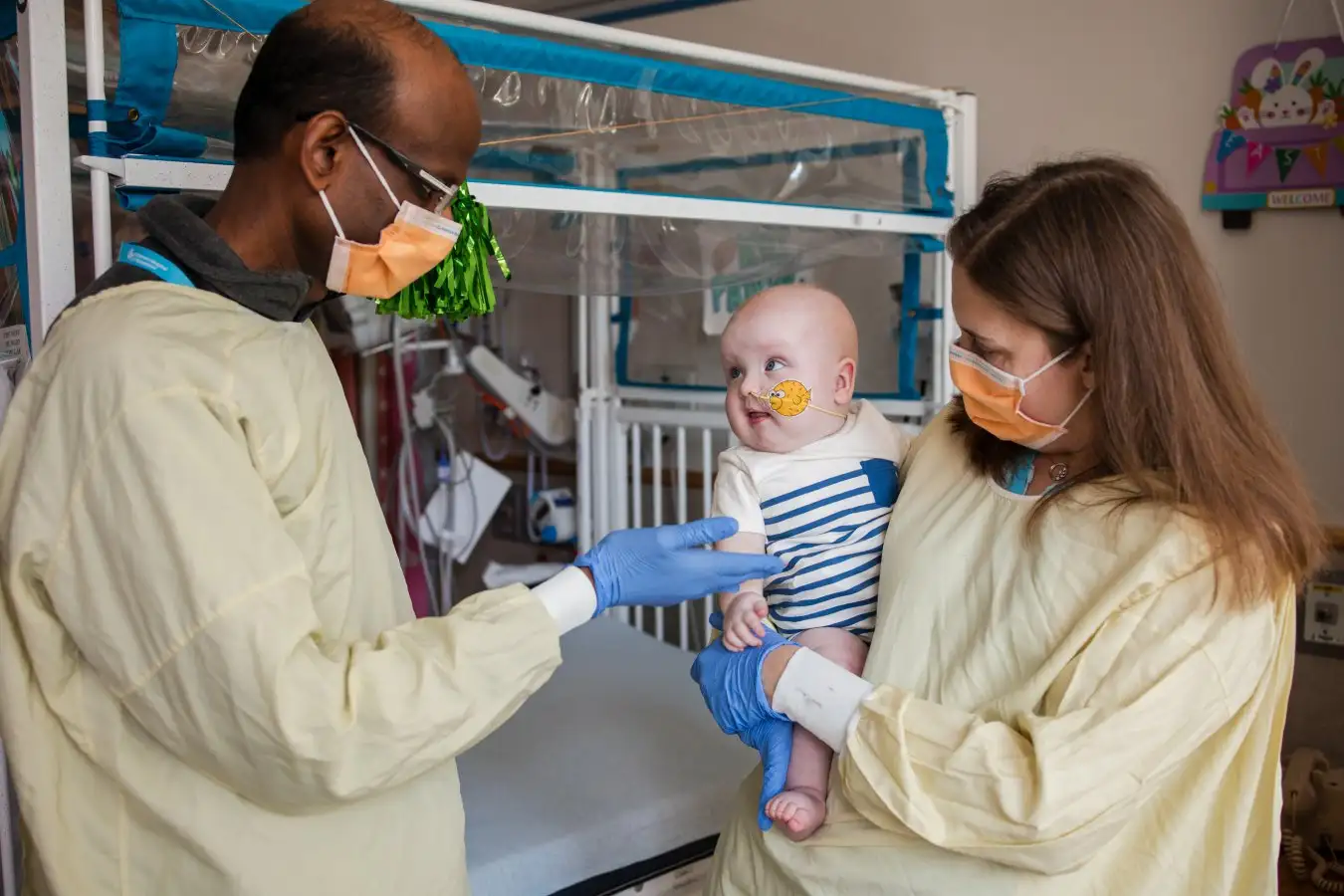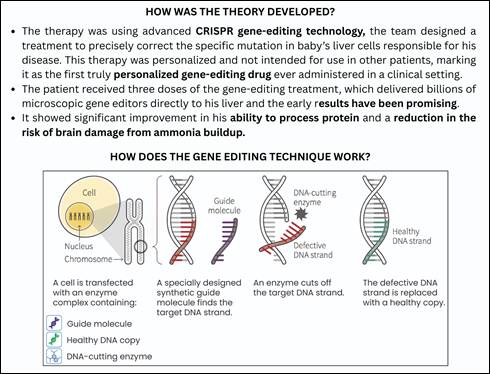- Courses
- GS Full Course 1 Year
- GS Full Course 2 Year
- GS Full Course 3 Year
- GS Full Course Till Selection
- Online Program
- GS Recorded Course
- NCERT (Recorded 500+ Hours)
- Polity Recorded Course
- Geography Recorded Course
- Economy Recorded Course
- AMAC Recorded Course
- Modern India, Post Independence & World History
- Environment Recoded Course
- Governance Recoded Course
- Science & Tech. Recoded Course
- International Relations and Internal Security Recorded Course
- Disaster Management Module Course
- Ethics Recoded Course
- Essay Recoded Course
- Current Affairs Recoded Course
- CSAT
- 5 LAYERED ARJUNA Mentorship
- Public Administration Optional
- ABOUT US
- OUR TOPPERS
- TEST SERIES
- FREE STUDY MATERIAL
- VIDEOS
- CONTACT US
World’s First Personalized Gene Editing Therapy Used to Cure a Rare Disease
World’s First Personalized Gene Editing Therapy Used to Cure a Rare Disease
20-05-2025

Why in the News?
Scientists in the US have, for the first time, successfully used a personalized CRISPR-based gene-editing treatment to cure a baby suffering from a deadly rare genetic disease (carbamoyl-phosphate synthetase 1 (CPS1) deficiency).
|
Background:
|
What is Gene Editing Therapy?
- This therapy involves modifying an organism’s DNA by correcting genetic defects, altering gene expression, or introducing new genetic material. It offers hope for treating conditions like sickle cell anemia, cystic fibrosis, and certain cancers, which are otherwise hard to treat.

- DNA Modification is done in two ways by using CRISPR-Cas9 (uses guide RNA & Cas9 nuclease to cut DNA at targeted sites); Zinc Finger Nucleases (ZFNs); TALENs, etc.
-
- Type 1: Somatic Gene Editing: Involves editing the DNA of non-reproductive (somatic) cells, like skin, liver, or blood cells, affecting specific tissues/organs in a living individual. Changes are limited to the treated individual & are not passed onto offspring.
- Type 2: Germline Gene Editing: Involves editing the DNA of reproductive cells (sperm, eggs) or early-stage embryos, affecting all cells in the resulting individual. Changes are heritable (passed to future generations) as they alter the genetic makeup of the entire organism, including somatic & reproductive cells.
Conclusion: The world’s first use of a personalized gene-editing therapy to cure a rare disease is a transformative leap for precision medicine. It demonstrates the potential to develop rapid, individualized cures for patients with unique genetic disorders, offering hope to families who previously had no treatment options.




